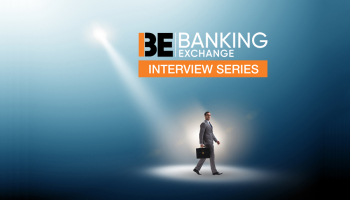Third Installment: SAS Executive Stu Bradley Discusses 2024 Anti-Fraud Report and Its Findings
Third of a four-part interview that will be displayed this week on Banking Exchange
- |
- Written by Banking Exchange staff

Stu Bradley, Senior Vice President of Risk, Fraud and Compliance Solutions at SAS, with Erik Vander Kolk of Banking Exchange. This is the third of a four-part interview that will be displayed this week on Banking Exchange.
![]() Erik Vander Kolk
Erik Vander Kolk
Who at a bank should be in the room when these decisions are being made about the infrastructure?
![]() Stu Bradley
Stu Bradley
A bank is not going to roll out enterprise customer decisioning all at once. They are going to look to very specific use cases that are pertinent to them at that particular time, and they’re going to pick a starting point. That could be a compliance use case. It could be a fraud use case. It could be a risk use case.
When they roll out that first use case, they’re going to lay down the components of a common infrastructure that allow them to roll on a second use case, a third use case, etc. They may need to engage with different parties within the institution with each use case, but they’ve got that infrastructure that enables them to start turning off legacy investments and start doing their core business functions in a more holistic way.
No doubt they’re doing this on a cloud native infrastructure. That’s why SAS has been on a journey to take all of our capabilities to cloud native. Doing this in the cloud accelerates the bank’s time to value.
The use case will help dictate who's in the room, but wherever you start, you need someone from the data office. You need someone who is going to ultimately be responsible for supporting it on-premises or via a cloud native application. And you need someone from the business — and that could be compliance, and it could be the frontline which owns different functions, like credit originations and fraud.
![]() Erik Vander Kolk
Erik Vander Kolk
What are some other concerns you are hearing from your clients?
![]() Stu Bradley
Stu Bradley
Knowing that the credit environment is changing greatly, there's risk of collections. There's risk of disputes on the fraud and scams side, so they want better processing, and they want to be able to protect the front door.
A lot of the activity we're seeing across the fraud, the risk and compliance, and the marketing spectrums is driving more integrated decisioning during customer onboarding and throughout the customer journey.
![]() Erik Vander Kolk
Erik Vander Kolk
How do you feel about financial institutions contributing to data sharing consortiums?
![]() Stu Bradley
Stu Bradley
I'll explicitly state I'm a big fan. The ability to leverage cross-institutional data is a very, very powerful tool. Even data in an anonymized form can be very informative in identifying new trends from a fraud perspective, as well as in identifying the link between bad actors and new players that are trying to perpetrate fraud.
Speaking of consortium data, that brings me back to SAS’ latest Anti-Fraud Technology Benchmarking Report with the ACFE. It should come as no surprise that the banking sector is at forefront of sharing data and tapping the power and potential of shared data. According to the survey, more than half of respondents from financial services said that their organization contributes to data-sharing consortiums — 55%, in fact. Cross-industry figures for data sharing were at 39%, so we once again see that financial firms are leading the way.
Done in an ethical and prudent way, adding consortium data can be an incredibly powerful tool in the arsenal, as the most pervasive issues we face, not only in banking but across industries, are perpetrated by organized criminals. If we can do a better job of sharing some of that critical information — not only across institutions but with law enforcement — we can actually do a much better job of detecting and eradicating fraud.
When you consider that SAS’ Faces of Fraud study found that two-thirds of consumers would switch provider due to a fraud experience or for better fraud protections, better fraud protection is a win for everyone.
Be sure to read every installment in our four-part interview series:
SAS Executive Stu Bradley Discusses 2024 Anti-Fraud Report and Its Findings
Tagged under Risk Management, Cyberfraud/ID Theft, Security, Digital, Feature, Feature3,
Related items
- Inflation Continues to Grow Impacting All Parts of the Economy
- Banking Exchange Hosts Expert on Lending Regulatory Compliance
- Merger & Acquisition Round Up: MidFirst Bank, Provident
- FinCEN Underestimates Time Required to File Suspicious Activity Report
- Retirement Planning Creates Discord Among Couples













